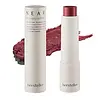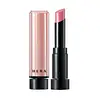What's inside
What's inside
 Key Ingredients
Key Ingredients

 Benefits
Benefits

 Concerns
Concerns

 Ingredients Side-by-side
Ingredients Side-by-side

Butyrospermum Parkii Butter
Skin ConditioningHelianthus Annuus Seed Oil
EmollientPrunus Amygdalus Dulcis Oil
Skin ConditioningMacadamia Integrifolia Seed Oil
Skin ConditioningHelianthus Annuus Seed Wax
Skin ConditioningRicinus Communis Seed Oil
MaskingHydrogenated Castor Oil Dimer Dilinoleate
Skin ConditioningPhytosteryl/Isostearyl/Cetyl/Stearyl/Behenyl Dimer Dilinoleate
Skin ConditioningEuphorbia Cerifera Wax
Trilaurin
Skin ConditioningTribehenin
EmollientOryza Sativa Bran Wax
Skin ConditioningAstrocaryum Murumuru Seed Butter
EmollientTheobroma Grandiflorum Seed Butter
Skin ConditioningArgania Spinosa Kernel Oil
EmollientCeramide NP
Skin ConditioningAvena Sativa Kernel Oil
Skin ConditioningPersea Gratissima Oil
Skin ConditioningSimmondsia Chinensis Seed Oil
EmollientMalt Extract
Skin ProtectingAvena Sativa Kernel Extract
AbrasiveOryza Sativa Extract
AbsorbentTocopherol
AntioxidantWater
Skin ConditioningButylene Glycol
Humectant1,2-Hexanediol
Skin ConditioningPolyglyceryl-2 Diisostearate
EmulsifyingSucrose Tetrastearate Triacetate
EmollientPolyhydroxystearic Acid
EmulsifyingDiisostearyl Malate
EmollientEthylhexyl Palmitate
EmollientIsopropyl Myristate
EmollientIsostearic Acid
CleansingPolyglyceryl-2 Triisostearate
EmulsifyingPolyglyceryl-3 Polyricinoleate
EmulsifyingCaprylyl Glycol
EmollientLecithin
EmollientEthylhexylglycerin
Skin ConditioningCI 77491
Cosmetic ColorantCI 77891
Cosmetic ColorantCI 77492
Cosmetic ColorantCI 77499
Cosmetic ColorantCI 15850
Cosmetic ColorantCI 42090
Cosmetic ColorantParfum
MaskingButyrospermum Parkii Butter, Helianthus Annuus Seed Oil, Prunus Amygdalus Dulcis Oil, Macadamia Integrifolia Seed Oil, Helianthus Annuus Seed Wax, Ricinus Communis Seed Oil, Hydrogenated Castor Oil Dimer Dilinoleate, Phytosteryl/Isostearyl/Cetyl/Stearyl/Behenyl Dimer Dilinoleate, Euphorbia Cerifera Wax, Trilaurin, Tribehenin, Oryza Sativa Bran Wax, Astrocaryum Murumuru Seed Butter, Theobroma Grandiflorum Seed Butter, Argania Spinosa Kernel Oil, Ceramide NP, Avena Sativa Kernel Oil, Persea Gratissima Oil, Simmondsia Chinensis Seed Oil, Malt Extract, Avena Sativa Kernel Extract, Oryza Sativa Extract, Tocopherol, Water, Butylene Glycol, 1,2-Hexanediol, Polyglyceryl-2 Diisostearate, Sucrose Tetrastearate Triacetate, Polyhydroxystearic Acid, Diisostearyl Malate, Ethylhexyl Palmitate, Isopropyl Myristate, Isostearic Acid, Polyglyceryl-2 Triisostearate, Polyglyceryl-3 Polyricinoleate, Caprylyl Glycol, Lecithin, Ethylhexylglycerin, CI 77491, CI 77891, CI 77492, CI 77499, CI 15850, CI 42090, Parfum
Phytosteryl/Isostearyl/Cetyl/Stearyl/Behenyl Dimer Dilinoleate
Skin ConditioningPolyglyceryl-10 Decaisostearate
EmollientMethyl Hydrogenated Rosinate
PerfumingBis-Diglyceryl Polyacyladipate-2
EmollientHelianthus Annuus Seed Wax
Skin ConditioningOctyldodecyl Neopentanoate
EmollientTriolein
Skin ConditioningPolyglyceryl-2 Triisostearate
EmulsifyingOryza Sativa Bran Wax
Skin ConditioningPolyamide-8
EmollientCI 77891
Cosmetic ColorantCI 77491
Cosmetic ColorantDipalmitoyl Hydroxyproline
Skin ConditioningSucrose Tetrastearate Triacetate
EmollientSilica Dimethyl Silylate
EmollientEuphorbia Cerifera Wax
Polyhydroxystearic Acid
EmulsifyingLimonene
PerfumingLecithin
EmollientCI 15850
Cosmetic ColorantEthylhexyl Palmitate
EmollientIsostearic Acid
CleansingIsopropyl Myristate
EmollientCI 77220
Cosmetic ColorantPolyglyceryl-3 Polyricinoleate
EmulsifyingCitrus Limon Peel Oil
MaskingDiphenyl Dimethicone
EmollientCI 77499
Cosmetic ColorantCI 42090
Cosmetic ColorantOenothera Biennis Oil
EmollientPhytosterols
Skin ConditioningCitral
PerfumingPentaerythrityl Tetra-Di-T-Butyl Hydroxyhydrocinnamate
AntioxidantCitronellol
PerfumingPelargonium Graveolens Flower Oil
MaskingTocopherol
AntioxidantLinalool
PerfumingGeraniol
PerfumingVegetable Oil
Skin ConditioningPhytosteryl/Isostearyl/Cetyl/Stearyl/Behenyl Dimer Dilinoleate, Polyglyceryl-10 Decaisostearate, Methyl Hydrogenated Rosinate, Bis-Diglyceryl Polyacyladipate-2, Helianthus Annuus Seed Wax, Octyldodecyl Neopentanoate, Triolein, Polyglyceryl-2 Triisostearate, Oryza Sativa Bran Wax, Polyamide-8, CI 77891, CI 77491, Dipalmitoyl Hydroxyproline, Sucrose Tetrastearate Triacetate, Silica Dimethyl Silylate, Euphorbia Cerifera Wax, Polyhydroxystearic Acid, Limonene, Lecithin, CI 15850, Ethylhexyl Palmitate, Isostearic Acid, Isopropyl Myristate, CI 77220, Polyglyceryl-3 Polyricinoleate, Citrus Limon Peel Oil, Diphenyl Dimethicone, CI 77499, CI 42090, Oenothera Biennis Oil, Phytosterols, Citral, Pentaerythrityl Tetra-Di-T-Butyl Hydroxyhydrocinnamate, Citronellol, Pelargonium Graveolens Flower Oil, Tocopherol, Linalool, Geraniol, Vegetable Oil
Ingredients Explained
These ingredients are found in both products.
Ingredients higher up in an ingredient list are typically present in a larger amount.
Ci 15850 is the pigment color red. It is an azo dye and created synthetically.
Azo dyes need to be thoroughly purified before use. This allows them to be more stable and longer-lasting.
This ingredient is common in foundations, lipsticks, and blushes. This color is described as brown/orangey red.
It has many secondary names such as Red 6 and Red 7. According to a manufacturer, Red 6 usually contains aluminum.
Learn more about CI 15850Ci 42090 is a synthetic dye created from petroleum. It is used to give a bright blue color to cosmetics, medicine, and food.
Ci 77491 is also hydrated iron III oxide. It's sole purpose is to give a red/pink hue to products.
Iron III oxides are classified as inorganic chemicals for coloring.
Synthetically created Ci 77491 is considered safer than those naturally found. This is because the synthetically created version may contain less impurities. Iron oxides are generally non-toxic and non-allergenic.
Learn more about CI 77491Ci 77499 is also hydrated iron III oxide. It is created from mixing red and black iron oxides. This helps give shades of darkness to a product.
Iron III oxides are classified as inorganic chemicals for coloring.
Ci 77891 is a white pigment from Titanium dioxide. It is naturally found in minerals such as rutile and ilmenite.
It's main function is to add a white color to cosmetics. It can also be mixed with other colors to create different shades.
Ci 77891 is commonly found in sunscreens due to its ability to block UV rays.
Learn more about CI 77891Ethylhexyl Palmitate, also known as octyl palmitate, is created from 2-ethylhexyl alcohol and palmitic acid. It is a fatty acid ester.
The fatty acid content of Ethylhexyl Palmitate makes it an emollient. Emollients help soften and hydrate your skin by trapping moisture within.
Ethylhexyl Palmitate is also used to help improve the texture of cosmetics. It helps other ingredient dissolve in products and help disperse ingredients more evenly.
You'll likely find this ingredient in sunscreen, as it is often used to mix UV-blocking ingredients such as avobenzone and ethylhexyl triazone.
It can also help stabilize the fragrances in a product as a fragrance fixative.
Ethylhexyl Palmitate can be used to substitute mineral oil.
Due to its high fatty acid content, it may not be fungal-acne safe.
Learn more about Ethylhexyl PalmitateHelianthus Annuus Seed Wax is created from the common sunflower.
Sunflower seed wax is made up of long chain non-glyceride esters, a small amount of fatty alcohols, and fatty acids.
This ingredient is often used to enhance the texture of products. The fatty acid properties also help hydrate the skin.
Learn more about Helianthus Annuus Seed WaxIsopropyl Myristate is an emollient, thickening agent, and texture enhancer. It is created from isopropyl alcohol and myristic acid.
It is used to help other ingredients be better absorbed. It is also an emollient and may help soften and hydrate the skin.
The comedogenic rating of this ingredient depends on the concentration. Lower amounts results in a lower rating.
Isopropyl Myristate may not be fungal acne safe. It can potentially worsen acne prone skin.
Learn more about Isopropyl MyristateIsostearic acid is a saturated fatty acid. Its structure makes it a great surfactant.
Surfactants help decrease the surface tension between two liquids. This property also makes it an effective emulsifier. Emulsifiers help prevent waters and oils from separating in a product.
Isostearic Acid is created from oleic acid.
This ingredient may not be Malassezia folliculitis, or fungal-acne safe.
Learn more about Isostearic AcidLecithin is a term for a group of substances found in the cell membranes of plants, animals, and humans. They are made up of mixture of phospholipids.
This ingredient has emollient and emulsifying properties.
As an emollient, lecithen helps soften the skin and creates a barrier to keep moisture in.
As an emulsifier, it also helps prevent water and oil ingredients from separating. Lecithin can also help ingredients be better absorbed by the skin.
This is because the phospholipids in lecithin produce liposomes. Liposomes help other ingredients get through the skin barrier.
Depending on the source of this ingredient, lecithin may not be fungal acne safe. This is because some sources of lecithin come from soybean oil, which may feed the malassezia yeast that feeds fungal acne.
We recommend reaching out to the brand you are purchasing from to inquire about the source of their lecithin.
Some other names for this ingredient include soy lecithin and deoiled soy lecithin.
Learn more about LecithinOryza Sativa Bran Wax is wax from the outer layer of a rice kernel. It has moisturizing properties due to its polysaccharides and omega-3 fatty acids content.
This ingredient is a byproduct of milling rice, or the operation to produce a whole grain rice product.
We don't have a description for Phytosteryl/Isostearyl/Cetyl/Stearyl/Behenyl Dimer Dilinoleate yet.
This ingredient is a form of glycerin with emulsifying and emollient properties.
As an emulsifier, this ingredient helps keep products together while adding a thick texture. The manufacturer states this ingredient has emollient properties. Emollients help keep the skin hydrated by trapping moisture in.
Polyglyceryl-2 Triisostearate is created by reacting diglycerin and isostearic acid. Due to the isostearic acid base, it may not be safe for Malassezia or fungal acne.
Learn more about Polyglyceryl-2 TriisostearateThis ingredient is an emulsifier. It is created from Polyglycerin-3 and Ricinoleic Acid.
As an emulsifier, it prevents waters and oils from separating. According to a manufacturer this ingredient is fully biodegradable.
This ingredient may not be safe for Malassezia folliculitis due to its Ricinoleic Acid base. Ricinoleic Acid is a fatty acid derived from castor oil.
Learn more about Polyglyceryl-3 PolyricinoleatePolyhydroxystearic Acid is a soft wax made from castor oil.
It is is a texture thickener, emulsifier, and film-former. Emulsifiers prevent ingredients from separating, such as oils and waters.
Polyhydroxystearic Acid may not be fungal acne safe.
Learn more about Polyhydroxystearic AcidSucrose Tetrastearate Triacetate isn't fungal acne safe.
Tocopherol (also known as Vitamin E) is a common antioxidant used to help protect the skin from free-radicals and strengthen the skin barrier. It's also fat soluble - this means our skin is great at absorbing it.
Vitamin E also helps keep your natural skin lipids healthy. Your lipid skin barrier naturally consists of lipids, ceramides, and fatty acids. Vitamin E offers extra protection for your skin’s lipid barrier, keeping your skin healthy and nourished.
Another benefit is a bit of UV protection. Vitamin E helps reduce the damage caused by UVB rays. (It should not replace your sunscreen). Combining it with Vitamin C can decrease sunburned cells and hyperpigmentation after UV exposure.
You might have noticed Vitamin E + C often paired together. This is because it is great at stabilizing Vitamin C. Using the two together helps increase the effectiveness of both ingredients.
There are often claims that Vitamin E can reduce/prevent scarring, but these claims haven't been confirmed by scientific research.
Learn more about TocopherolEuphorbia Cerifera wax comes from a shrub in Northern Mexico. It is used to stabilize formulations and has emollient properties.
Emollients form a thin layer on top of skin to prevent water from evaporating, keeping skin and lips hydrated.
According to a manufacturer, this wax can range from a yellow/brown color to translucent.
Learn more about Euphorbia Cerifera Wax